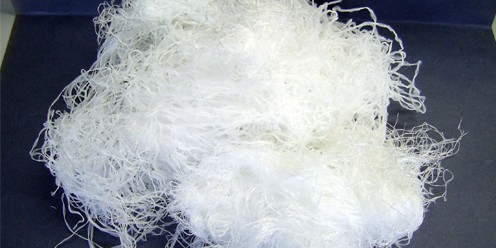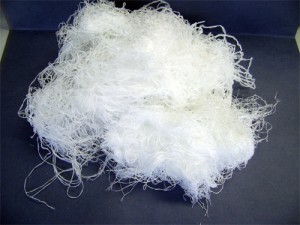
 Today I had a fabric buyer from one of the better known fashion houses contact me about getting her hands on some “drapey” fabrics.. So of course I showed her headers of some of the usual suspects; silk charmeuse, cupro, triacetate , etc. However, to my surprise, she also grabbed a few samples of polyester. Now, in my experience, designers tend to turn their schnozes up at this particular textile. I can’t say I blame them. Most people’s knowledge and experience with polyester conjures up visions of 1970’s leisure suits and house dresses. But I have to be honest. In recent months I have been exposed to some amazing polyester fabrics that possess a silky soft hand, the perfect amount of luster, and a beautiful drape.
Today I had a fabric buyer from one of the better known fashion houses contact me about getting her hands on some “drapey” fabrics.. So of course I showed her headers of some of the usual suspects; silk charmeuse, cupro, triacetate , etc. However, to my surprise, she also grabbed a few samples of polyester. Now, in my experience, designers tend to turn their schnozes up at this particular textile. I can’t say I blame them. Most people’s knowledge and experience with polyester conjures up visions of 1970’s leisure suits and house dresses. But I have to be honest. In recent months I have been exposed to some amazing polyester fabrics that possess a silky soft hand, the perfect amount of luster, and a beautiful drape.
Now, if you’ve been following my writing over the past months, you know I’m big into eco-friendly so at first thought, no matter how lovely the fabric looks, polyester is not a fiber I would choose to work with. However, I do know that there are a lot of sustainable versions of polyester that I could and should take the time to look into; poly made from plastic bottles is one…
So, what do you all think? Do you work with polyester? If not, would you consider it if the fabric quality met your needs and expectations? What about earth-loving versions?

Nicole
Thank you for your insight, Illek. Do you use vintage in your design work? It’s funny, someone recently laughed at me for stating that I believe using vintage materials is a form of being “eco-friendly”. Apparently, they did not agree. In my opinion, by utilizing vintage, that’s one less company producing textile waste.
Thanks again for your comment. It’s so nice to get some feedback on what we put out there here at Textile Talk!
~Nicole
Illek
First let me say I very fortunate to have stumbled upon, sans using the app “stumbleupon” lol, this blog. I am a designer who advocates the use of eco-friendly materials, but I’m also a vintage retailer so I can totally relate to the 70s polyester era!
From what I’ve already researched regarding synthetics and its harsh processing regime, I would use earth-loving versions, or find textile mills that adhere to strict quality control reg’s that were eco-friendly.
I know that may be costly but my thing is this:
they always say “you Are, what you Eat” well since our skin is an absorbing organ I say “we Breathe, what we Wear” too!